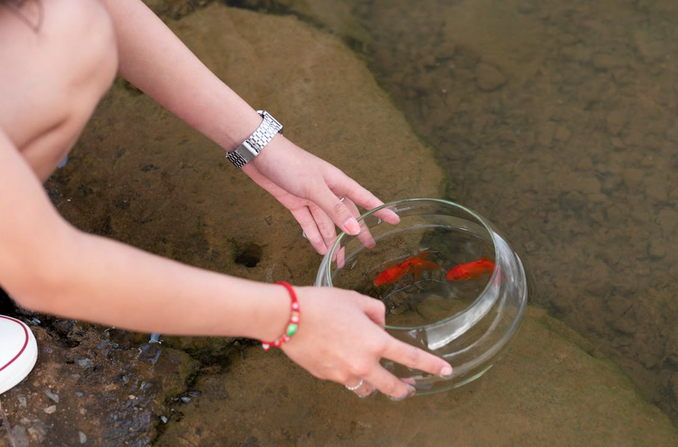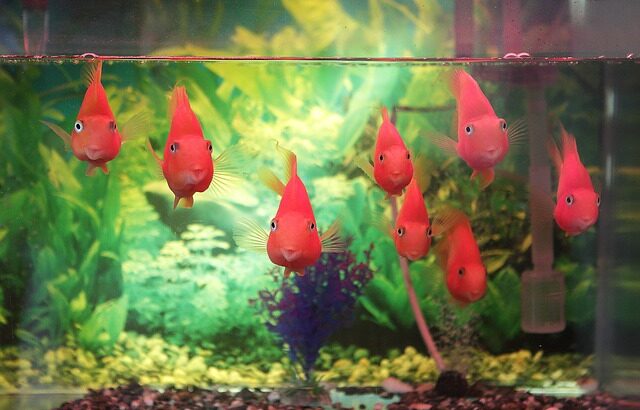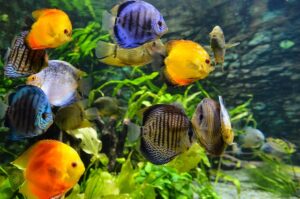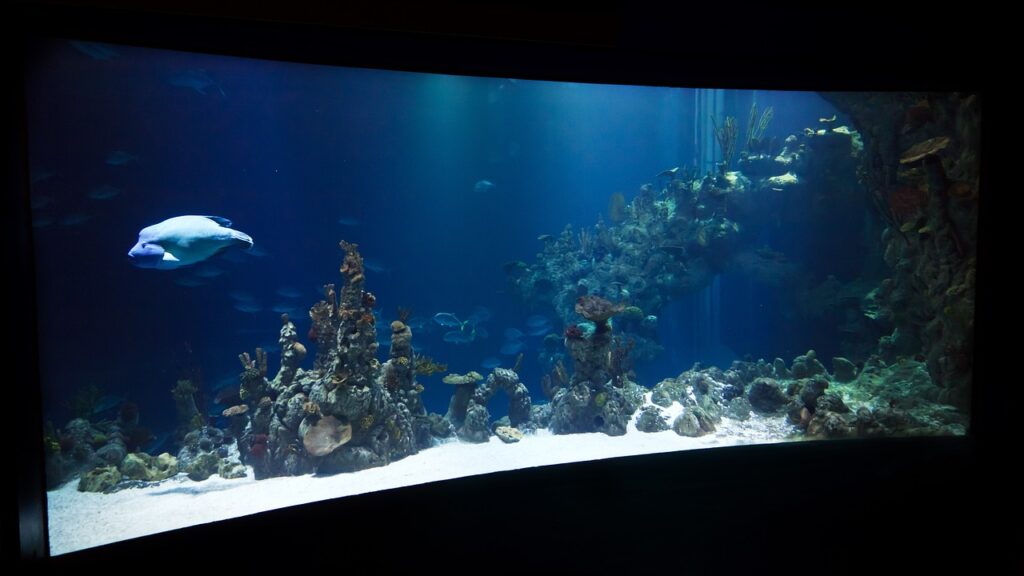Setting up an aquarium can feel like stepping into a beautiful underwater world. You create a vibrant habitat filled with colorful fish and intriguing plants. But even the most passionate aquarists can make mistakes that could harm their finned friends or disrupt the delicate balance of their aquatic ecosystem.
Are you unknowingly making common errors in your tank? If so, you’re not alone! Many aquarium enthusiasts overlook crucial aspects of fish care, which leads to problems down the line. Let’s dive into some of these hidden pitfalls and how you can easily avoid them—ensuring your aquatic adventure is as joyful as it should be.
Overfeeding Your Fish
Overfeeding your fish is one of the most common mistakes new aquarists make. It’s easy to think that giving them more food will keep them happier and healthier. But in reality, it can lead to a host of problems. Excess food decomposes in the tank, polluting the water. This not only affects water quality but also encourages harmful algae growth. Fish may become overweight or develop health issues from overeating.
A good rule of thumb is to feed what they can consume within a few minutes, once or twice a day. Start small and adjust as needed if you’re unsure about portion sizes. Observe their behavior—if they’re still hovering around after eating, you might be overdoing it! Keeping an eye on their feeding habits helps maintain a cleaner environment and keeps your aquatic friends thriving.
Skipping Regular Water Changes
Maintaining a healthy aquarium requires regular water changes, yet many owners neglect this essential task. Over time, toxins and waste build up in the tank, which can lead to unhealthy living conditions for fish. Skipping water changes affects not just the clarity of your tank but also its overall ecosystem. Elevated levels of nitrates and ammonia can cause stress or illness in your aquatic friends.
Aim to change about 10-15% of the water weekly or 25% bi-weekly, depending on your tank size and stocking levels. When performing a water change, always use a gravel vacuum to remove debris that settles at the bottom. Make sure to treat any new water with a dechlorinator before adding it back into the tank. Regular maintenance promotes a thriving environment where fish can flourish without fear of hidden dangers lurking beneath the surface.
Not Cycling the Tank Before Adding Fish

Many new aquarium enthusiasts overlook the importance of cycling their tanks before introducing fish. Cycling refers to establishing beneficial bacteria that break down harmful waste products in the water. When you skip this crucial step, your tank can become toxic for its future inhabitants. Ammonia and nitrite levels can spike, leading to stress or even death for your fish.
Setting up a proper cycle takes time but is worth every minute. You can choose between a fishless cycle using ammonia sources or a method with hardy fish species as testers—though the first option is often kinder. Regularly testing your water parameters during this phase will show you how well the cycle is progressing. Patience here pays off, ensuring a healthier environment once those vibrant little swimmers enter their new home.
Mixing Incompatible Fish Species
Creating a vibrant aquarium often leads enthusiasts to mix various fish species. However, this can backfire if you don’t do your homework. Different fish have unique temperaments and environmental needs. Some are territorial, while others thrive in schools. Pairing aggressive species with peaceful ones can spell disaster in your tank. Compatibility goes beyond just size or color; it involves understanding behavior patterns, too. A small, timid fish might not stand a chance against an assertive counterpart looking for dominance.
Research each species’ specific requirements before introducing them into your home aquatic environment. Consider their natural habitats—this insight could save lives and reduce stress levels. Constantly monitor interactions closely after adding new members to the tank. If aggression arises, be prepared to separate them swiftly to maintain harmony within your underwater community. Your goal is a thriving ecosystem where all residents feel safe and happy.
Using Tap Water Without Conditioning
Many aquarium enthusiasts underestimate the importance of water quality. Using tap water directly can introduce harmful chemicals and toxins into your tank. Chlorine, chloramine, and heavy metals are common culprits found in municipal water supplies. These substances can stress fish and disrupt the delicate balance of your aquarium ecosystem. Fish may show signs of distress, like gasping for air or hiding more than usual.
Always condition your tap water before adding it to your tank to ensure a healthy environment. Water conditioners are readily available at pet stores and effectively neutralize harmful elements. Some hobbyists opt for reverse osmosis systems or bottled spring water as alternatives. These options might be pricier but provide peace of mind when setting up a new tank or conducting frequent changes. Be proactive about regularly testing your water to monitor its quality. This way, you create a safe haven for your aquatic friends while enjoying their vibrant beauty.…



 Proper lighting plays a crucial role in preventing algae overgrowth in your aquarium. Dr. Robert D. Metcalfe stated that algae thrive on light, and by providing the right intensity and spectrum, we can control their growth and prevent unwanted blooms. Like plants on land, aquatic plants require light for photosynthesis to thrive. Too much light can create an ideal environment for algae to flourish, while insufficient lighting may hinder plant growth. Choosing a lighting system that provides adequate illumination without overpowering your tank is essential. Additionally, pay attention to the duration of light exposure.
Proper lighting plays a crucial role in preventing algae overgrowth in your aquarium. Dr. Robert D. Metcalfe stated that algae thrive on light, and by providing the right intensity and spectrum, we can control their growth and prevent unwanted blooms. Like plants on land, aquatic plants require light for photosynthesis to thrive. Too much light can create an ideal environment for algae to flourish, while insufficient lighting may hinder plant growth. Choosing a lighting system that provides adequate illumination without overpowering your tank is essential. Additionally, pay attention to the duration of light exposure.
 One of the key strategies for preventing algae overgrowth in your aquarium is to maintain good water circulation. According to Dr. Paul Cooper, insufficient water circulation can lead to stratification, which traps nutrients at the bottom while depriving surface waters of necessary oxygen. By implementing proper water circulation, we can disrupt this stratification and create a more balanced and less favourable environment for algae growth.
One of the key strategies for preventing algae overgrowth in your aquarium is to maintain good water circulation. According to Dr. Paul Cooper, insufficient water circulation can lead to stratification, which traps nutrients at the bottom while depriving surface waters of necessary oxygen. By implementing proper water circulation, we can disrupt this stratification and create a more balanced and less favourable environment for algae growth.